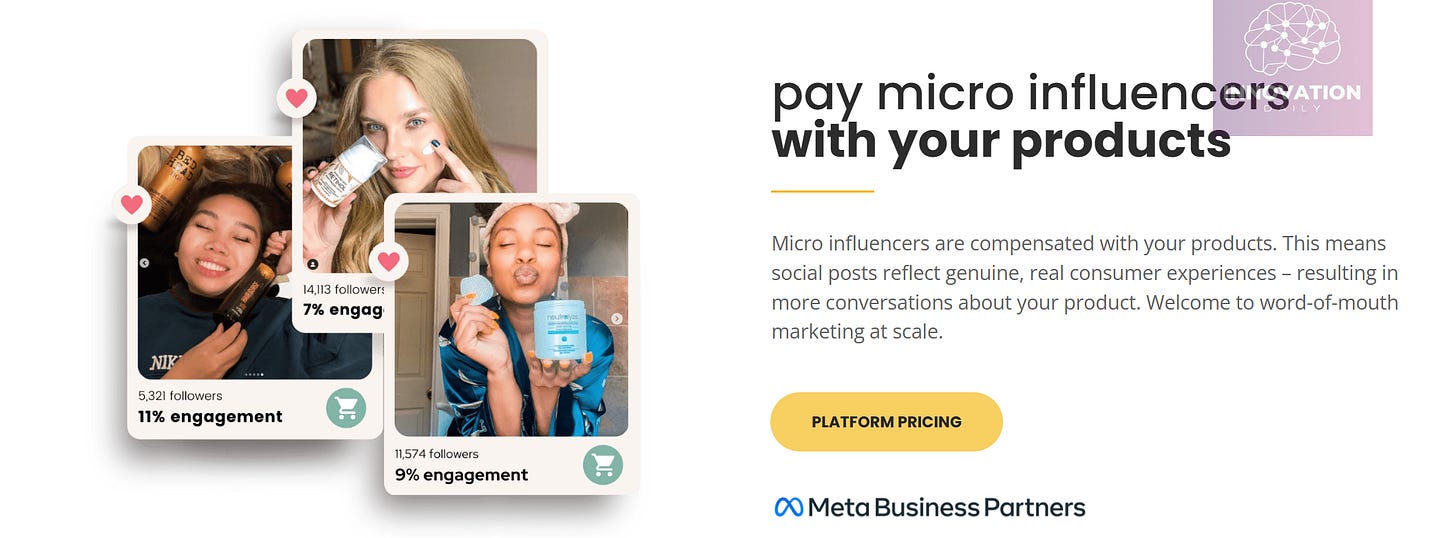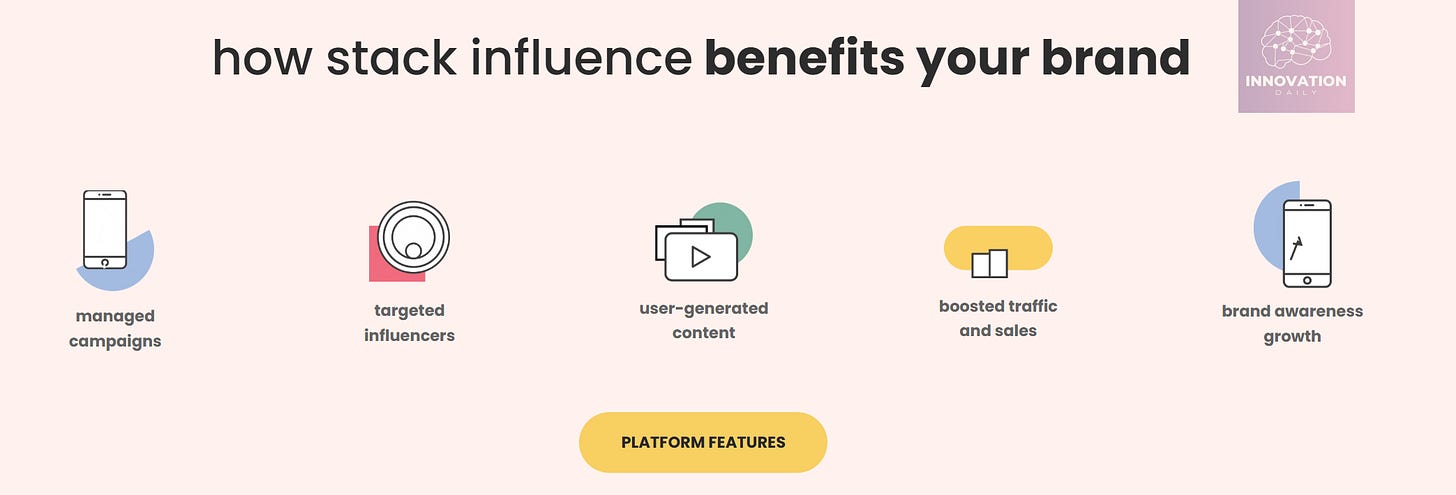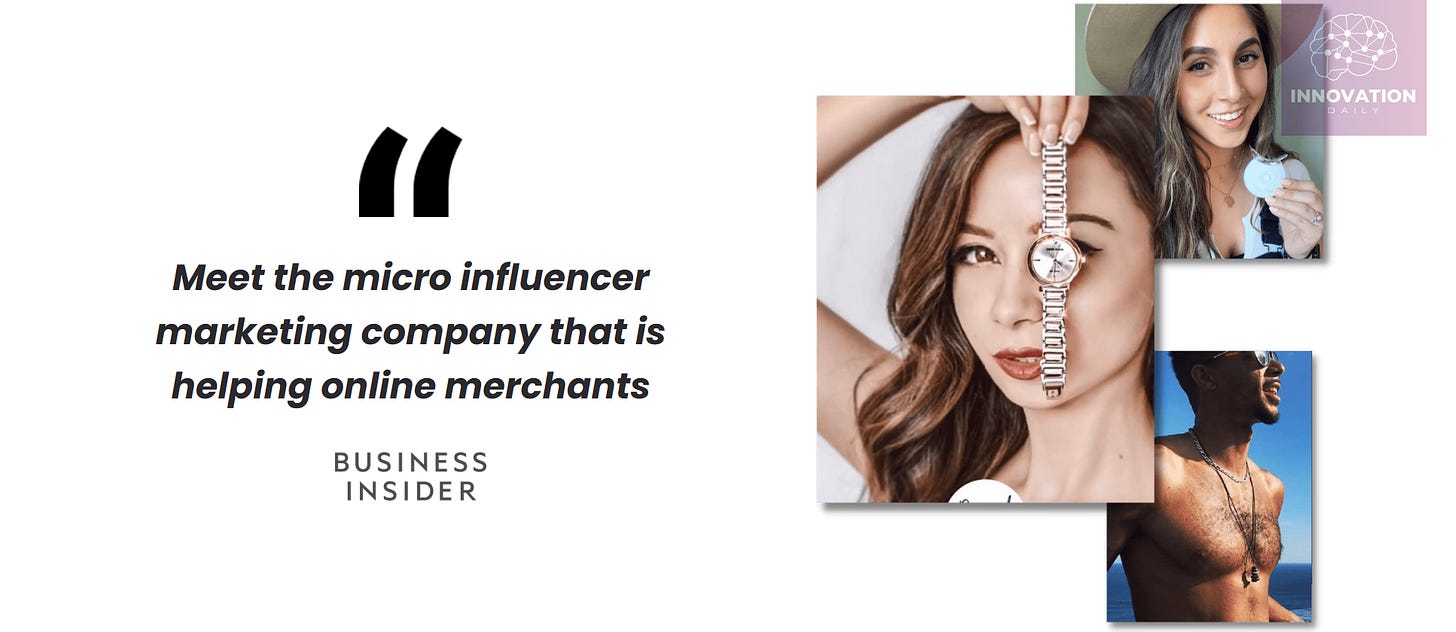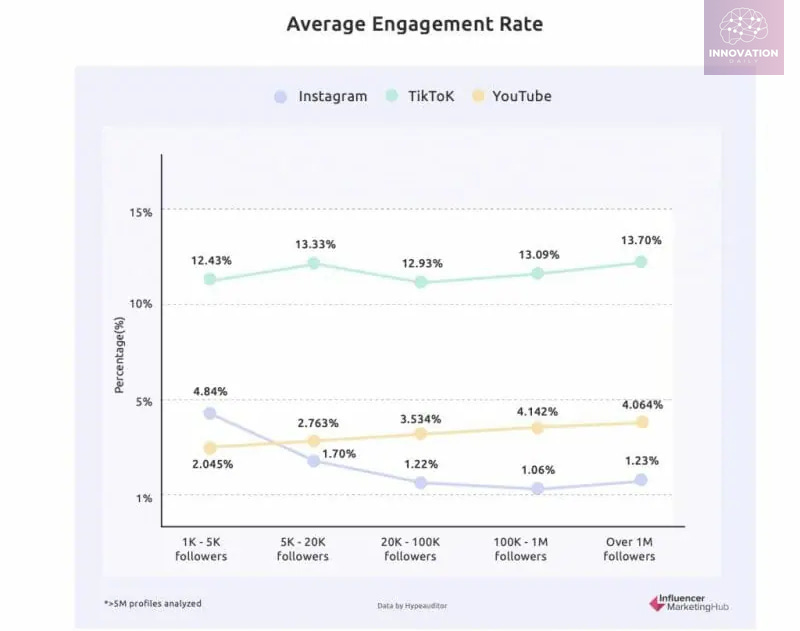The Hidden Engine Behind High-ROI Product Marketing
Today's featured startup is leveraging everyday creators, AI matching, and real-user content to outperform ads and deliver trust at scale
Project Overview
Stack Influence helps brands promote their products through “everyday influencers” — micro-creators with small but engaged audiences.
In the startup’s definition, these are people with fewer than 20,000 Instagram followers. The key idea is simple: instead of paying creators cash, brands reward them with the product itself.
The platform focuses on categories where real-user reviews matter most — beauty, wellness, lifestyle, gadgets, food, kids, fashion, and pets.
Typically, American micro-influencers charge $100–$500 per Instagram post. That means the product value the brand offers usually sits in the same range.
Creators must register on Stack Influence and go through profile approval. The platform analyzes their audience — category, engagement, demographics — and adds the profile to its targeting engine.
Approved creators get access to a rotating catalog of items offered by brands. But before joining a campaign, the platform’s algorithm checks whether the influencer’s demographic, psychographic, and geographic attributes match the brand’s targeting — all powered by AI.
Products are shipped to influencers for free.
The influencer’s job: post a brief Instagram review with a photo/video + brand hashtag. Stack Influence automatically detects posts, tracks performance, and reports back to advertisers.
The system also flags creators who fail to post, show suspiciously low engagement, or try to game the system — and blocks them.
On top of that, Stack Influence sends creators personalized content tips to help improve engagement and maintain campaign quality.
The startup claims to have identified over 11 million U.S. micro-influencers. This is likely the number of profiles discovered via automated scans — not necessarily creators who signed up voluntarily.
Its client list includes major names from Unilever to the $100M-funded Magic Spoon.
Stack Influence has been around for several years but only recently raised its first outside funding: $1.27M.
What’s the Gist?
Stack Influence isn’t trying to “win influencer marketing” as a whole — it’s laser-focused on micro-influencers.
And that’s where the opportunity lies.
Macro-creators with millions of followers are few in number (around 34,300 on Instagram) and brands can easily negotiate with them directly. Micro-creators, on the other hand, number around 60 million — and running campaigns at this scale is impossible without a specialized aggregation platform.
But why would brands bother with thousands of small voices instead of one big star?
Because micro-influencers often deliver 6–7× higher engagement than bigger creators.
Other studies show a 4.84% engagement rate for creators under 5K followers vs. 1.23% for celebrities — still a massive gap.
On YouTube the effect reverses (celebrities perform better), while on TikTok the gap is minimal. But on Instagram — where product discovery still thrives — micro-influencers win.
Product posts from small creators generate 22% more conversations with followers, both because audiences ask more questions and creators respond more often — a key factor that boosts purchase conversion.
Stack Influence claims that micro-influencer content converts buyers 5× better than paid ads.
And when looking at ROI, user-generated posts outperform traditional Instagram ads by 2.9×.
Even though micro-influencers usually produce lower-quality photos/videos, authenticity wins. Raw, real-life content generates 78% more engagement than polished studio shots — because audiences trust real people more than glossy, staged ads.
It’s not just visuals — words matter too. Someone who actually tried the product will describe it more sincerely than someone paid for a generic script.
Key Takeaways
The influencer marketing industry is scaling fast:
$1.7B in 2016 → $16.4B in 2022 → $21.1B expected in 2023.
Traditional advertising keeps getting more expensive and less effective. Meanwhile, influencer-driven promotion is becoming increasingly attractive to brands — and the growth rate proves it.
A particularly promising niche is platforms that enable large-scale micro-influencer campaigns.
Why?
You simply cannot manage micro-influencers manually. The volume is too big.
They provide better conversion rates and ROI than most traditional ads.
But high conversion is only possible if the content feels honest and authentic. That’s why the mechanics used by Stack Influence (free products) and Zipr (paid discounts) are so compelling.
The market is big, the pain is real, and the playbook is already visible — meaning founders can start building right now.
Company Info
Stack Influence
Website: stackinfluence.com
Latest Round: $1.27M, 23.11.2023
Total Funding: $1.27M across 1 round













